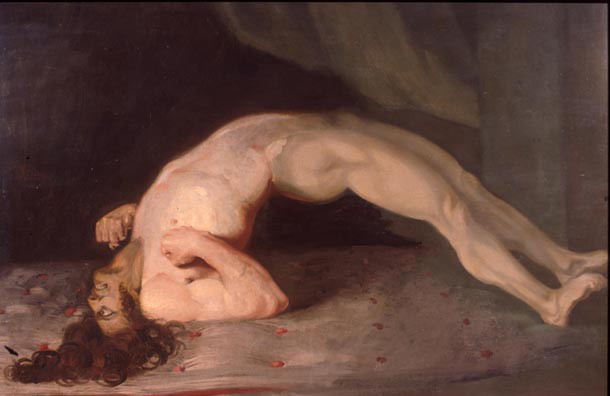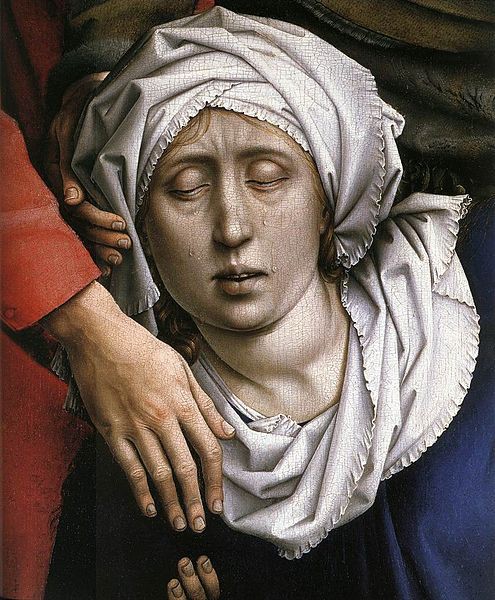I spy van Gogh’s depression, Bronzino’s syphilis, and way too many goiters


Medicine is an art. It’s why I have always believed the most talented physicians are also the keenest artists. And while diseases may cause death, the soul of art lives on. Or, as the father of medicine, Hippocrates, said, “Life is short, the art long.”
The following portraits have endured through the ages. Let’s play history detective and understand the people behind the disease.

Dr. Gachet’s mellow yellow
After van Gogh left the asylum at St-Rémy, he painted three paintings of his friend and physician, Dr. Gachet. Between Dr. Gachet’s dejected eyes, cadaverous skin, and the wilted plant in his hand, Dr. Gachet is clearly bummed out.
The plant in his hand is foxglove or digitalis. At the time, digitalis was used to treat psychiatric disorders, including delirium tremens, mania, and epilepsy. (Epilepsy was once believed to be a psychiatric problem.) Dr. Gachet suffered from depression (called melancholia) and treated van Gogh for the same condition.
Digitalis also had a rare but nasty side effect — a yellow discoloration of vision. Some medical researchers have hypothesized that van Gogh’s obsession with yellow in his paintings was due to taking digitalis, but there isn’t any proof he used the drug.

Venus and Cupid’s public service announcement
Poor Venus. She gets blamed for all the world’s sexual woes. There’s a reason why STDs are called “venereal diseases” and not marsereal diseases. The above painting may look innocent, but there is something more sinister going on between Venus and Cupid.
To start, the masks in the lower right-hand corner represent deception. The Cupid on the right holds flowers and wears bells around his leg to represent pleasure. Is Bronzino saying pleasure is deceptive? The scary, toothless screaming man may have the answer…

Most art historians believe this painting is not an allegory for desire but an allegory for disease. Or, more specifically, the sexually transmitted disease syphilis.
In Bronzino’s day, syphilis was far more agonizing than it is today. The last stage of syphilis — the tertiary phase — affects the heart, blood vessels, and nervous system. Symptoms include paralysis, blindness, seizures, headaches, and dementia. In this final stage, many would pull out their hair and pound at their head like the man above.
His other syphilitic symptoms include swelling on his fingers, patchy hair (alopecia), and toothless gums. (His bleeding gums may have also been caused by the mercury treatments used to treat syphilis.)
He is not the only one having a bad neurological day. The woman in the top left represents Oblivion, and she is missing half her brain — possibly a reference to how the disease ate away the brain.
The Cupid on the right is oblivious too. He is stepping on thorns with a beatific grin and no pain.

This is known as tabes dorsalis — an ongoing loss of pain sensation and paralysis in the tertiary phase of syphilis.
An Allegory with Venus and Cupid is an erotic painting. Still, it comes with a warning often repeated amongst all the horny Renaissance kids —”A Night with Venus, a Lifetime with Mercury”…or a hell of a lot of screaming pain.
Angry man in a bridge pose

This man might look like he is contorting his body into a yoga pose, but he is in the throes of opisthotonus — spasms of the muscles that cause backward arching of the head, neck, and spine. Opisthotonus is often caused by severe tetanus. (This man most likely got tetanus after a bullet wound.)
Sir Charles Bell was both a doctor and an artist. Bell made careful recordings of many of his patients and is best remembered for the condition named after him — bells palsy. Bell’s palsy is unexplained facial paralysis due to damaged facial nerves.
Being both a doctor, artist, and teacher, Bell changed how art students portrayed facial expressions. Bell believed bodily gestures and facial expressions revealed the soul. And given that most communication is nonverbal, some physicians might want to heed his advice when speaking to patients.

Those guilt-ridden goiters
Artists of the past had a funny way of portraying humility. Penitence only came when you messed with your subject’s hormones. It’s why you will find a lot of crucifixion scenes showing whopping goiters.
A goiter is an enlargement of the thyroid gland due to iodine deficiency. In many parts of poorer communities in Europe, the condition was common where the soil and water lacked iodine.
Some of the goiters are pretty obvious, like the one found in this Caravaggio painting.

Others are more subtle.

You can also find a lot of Madonna and Child scenes with the bulge.

Unlike today, abject poverty was cool. For this reason, we do not know if artists were taking liberties with their subjects and adding goiters to show the subject’s impoverishment, or if the paintings were realistic and practically everyone had a thyroid problem. Either way, now you can play “spot the goiter” on your next museum visit.
Bacchus’ flatulence

The painting above depicts the moment Bacchus first lays eyes on Ariadne and falls helplessly in love. He is so smitten that his head is in the clouds. But while love can levitate you to the heavens, it also can cause your bowels to twist into a lurid hell.
Yep, that’s right. Bacchus is caught in a moment of unbridled gassiness.
Titian is clearly having a little scatological fun with this scene. The satyr offers a clue to just how much fun.

We know Bacchus is breaking wind by the white flower’s spread pistons beneath the satyr. The white flower is a caper flower. Doctors used it as a natural carminative to prevent flatulence.
Titian is saying that the lovestruck Bacchus has lost control of both his fervor and his flatulence. In other words, Ariadne is the wind beneath his sails, the toot in his horn, a blast of hot cheekiness… ok, I will stop.
Throughout history, artists’ materials were also found in a doctor’s medical bag. Precious saffron created vivid yellows, reds, and greens but was also used to treat asthma and whooping cough. Scarlet red was made from female scale insects, and traditional Chinese medicine used it to treat wounds. And mercury was used to create vermillion and treat syphilis.
One can always find the science in art and the art in science. Perhaps that is the lesson we can learn from studying art through the lens of medicine — both connect us to our humanity.
“Wherever the art of Medicine is loved, there is also a love of Humanity.”— Hippocrates


Very informative
LikeLike